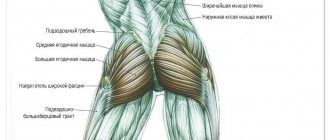Calorie consumption
Based on the fact that 500 grams of fat contains approximately 3,500 calories, you need to burn about 700 calories every day to burn a pound of fat in a week. The optimal way for this is to cut carbohydrates from your diet, add proteins and healthy fats to your diet, and also do 3-4 cardio workouts per week. In such a training cycle, exercises such as running, jumping rope, and all basic and isolation exercises with iron at high intensity are usually performed.
To feel the fat burning effect of a workout, you need to jump rope for at least 10 minutes per set. This is equivalent to the effect of running 3 km in six minutes or 12-15 minutes of swimming.
It is also necessary to perform jumping rope in between sets of exercises with iron. It is enough to spend 15-20 seconds in each rest interval to feel the effectiveness of your workout in the near future.
About 250 calories can be burned during fifteen minutes of jumping rope. The first few minutes should be performed at medium intensity, this will warm up the muscles and make blood circulate faster throughout the body. In addition, you need to keep your back straight, do not slouch or hunch, your head is raised, your gaze is in front of you.
The twisting moment of the rope must be set only by the wrists, while the elbows must either be pressed to the body or placed as close to the body as possible.
Jump rope: which muscles are used the most?
We can say that during jumping your entire body works in one way or another, from your legs to your arms. However, the peak load (60-70%) falls on the calf muscles. If you do everything right, your calves will start to hurt first. In addition, the muscles of the thigh and buttocks perform active work. The quadriceps accounts for about 15% of the load. But this indicator varies depending on the jumping technique, of which, by the way, there are a large number today.
The core muscles also take part in the work. The fact is that during jumps our body needs constant stabilization, which is provided by the press and spinal erectors. In general, we are talking about a load of no more than 10%. It’s also worth mentioning about the arm muscles. They work little, but still take the load. If we take into account the simplicity of this exercise and its effectiveness, then it certainly deserves attention. But we have not yet fully learned what a jump rope is. We figured out what muscles are involved, and now we move on.
How to learn to jump rope
To begin with, just jump without a rope to remember the correct position of your torso. Then do several repetitions with the jump rope until you get the hang of it. The main thing here is to catch the right pace so as not to trip over the rope cord and fall. Success will be considered the fact when you can jump rope for up to one hour (with breaks, of course) without snags or hitches.
Some tips to help with jump rope training:
- Choose a moderately soft and elastic surface. Otherwise, there is a risk of injury due to increased load on the knee joint and ankle. Sports mats, a boxing ring, and sand are ideal.
- Choose comfortable shoes. It is inconvenient to jump in shoes that are too tight or too large in size, as you can injure your toes or get caught in the rope. The sole of the shoe should be elastic, with a springing effect.
- You shouldn't set records in jumping rope from the very beginning. First you just need to learn how to jump correctly and catch the pace, master several jumping techniques. In short, develop coordination of movements. The stage is considered completed if you manage to jump uninterruptedly for 30 seconds at medium intensity.
- Constantly increase the complexity of the training process: change techniques, jumping speed, speed of rotation of the rope, duration of approaches.
- Take breaks. Don’t try to imagine yourself as professional athletes and don’t jump until you faint. Focus on the boxers' program: 3 minutes of jumping, and then rest for thirty seconds or a minute. You can train like wrestlers: not jump for 3 minutes, but 5-6, changing the jumping technique and intensity every half a minute. And they rest for about one and a half to two minutes. You should perform from five to 15 approaches.
- Set aside days for rest. It is optimal to do cardio training 4 days a week (2 days every other day). More advanced athletes can afford to train 5 days a week.
There are 3 types of jumps:
- due to the work of the ankle (jumping on toes);
- jumping with the inclusion of legs (legs bend at the knee and hip joints);
- jumping with a tilt of the body, work of the legs and ankles (includes the first two methods, adding to this small tilts of the body when pulling the legs towards the shoulder girdle).
Efficiency of the jump rope
Many athletes know very well that there are two ways to lose weight: active and passive. The second method is diet. In this case, you can do without physical activity, although this is not very desirable.
But the greatest effectiveness can be achieved with a balanced diet and daily cardio training. What muscles work when jumping rope, you might ask? These are calves, buttocks, thighs and core muscles. But besides this, your heart, as well as the respiratory system, receives a load. During such activities, endorphins are released into the body, they are also hormones of happiness. Therefore, your mood will become a little better, even on the gloomiest day. Overall, this is an excellent choice for those who do not have enough time to go to the gym. Take a jump rope with you for a run, and the results will not be long in coming, as you will soon see for yourself which muscles are pumped on the jump rope. This does not take much time, the main thing is patience.
Jumping techniques
- Classic: Rotating the rope, bounce on your toes, springing your knees. You need to perform one jump per rotation.
- Double rotation: like the classic ones, but in one jump you need to perform 2 rotations with the rope. The jumps are strong, explosive, the knees are pulled towards the body.
- Triple Spin: Same as Double Spin, but requires 3 spins.
- Jumps with reverse rotation of the rope: like classic jumps, but the rope rotates in the opposite direction. Requires extreme coordination of movements.
- Lateral Jumps: During the rotation, you need to jump and move to the right, then to the left on the second rotation.
- Jumps with alternating legs: first jump on one leg during the first rotation, then on the second leg on the second jump.
- Criss-cross: going for a classic jump, only when turning around, the arms are crossed in front of you.
- Lateral swing: after one jump, the athlete rotates the rope alternately from the right and left.
- Jumps on one leg: the same as classic jumps, but on one leg.
- Somersault: After the classic jump, you need to do a forward or backward somersault while turning the rope.
It is not recommended to use jumping rope for people with leg or hip and knee injuries. People with problems with the cardiovascular system or vestibular system should definitely refrain from jumping (or jump at an intensity below average).
Persons with second or third degree obesity or varicose veins should exercise with a skipping rope after a long consultation with a sports doctor or under the supervision of a trainer (or the doctor himself).
The easiest way is to make a jump rope yourself. It is enough to take a clothesline of suitable length, tie a couple of knots at the ends and attach wooden or plastic handles - and the high-tech projectile is ready.
Here is some example of matching a person's height and the size of a jump rope:
1.5 m – 1.8 m. 151-167 cm – 2.5 m. 168-175 cm – 2.8 m. 176 to 183 cm – 3.0 m. over 183 cm – 3.8 m.
The benefits of jumping rope
The benefits of this exercise are obvious:
- you become much more resilient;
- you spend a lot of calories;
- lose excess weight;
- improve muscle definition;
- develop dexterity and coordination;
- speed up your metabolism.
In addition, such moderate-intensity cardio training is very useful for the functioning of the cardiovascular system, since it normalizes blood pressure and trains a uniform breathing rhythm. Working with a moderately elevated heart rate (about 120 beats per minute) makes your heart muscle stronger and more resilient. It becomes much easier for her to cope with the entire volume of training load.
How to choose
Absolutely all brands that fill the market with sports goods produce jump ropes. Manufacturers such as Adidas, Everlast, HMS, Joerex, Kettler, Rdx, Reebok, Spokey, Tunturi, Vizavi especially stand out.
You can buy a jump rope of any category and any brand in almost any sporting goods store or at flea markets. But if you are too lazy to go to the store or don’t have time, you can order in online stores, online auctions or forums. The price for such an element of sports equipment varies from 200 (standard) to 1,500 rubles (stuffed with all kinds of counters or other accessories for productive training).
You should choose a jump rope based on several parameters:
- cord length;
- cord material, its wear resistance;
- handle material;
- comfortable handles from an ergonomic point of view;
- number of accessories.
If you just want to start working with a jump rope, it is recommended to choose a classic jump rope, without any “bells and whistles”, suitable for your height (height and length comparisons are given above), with comfortable handles that provide good grip.
Athletes with some training experience can already identify their weaknesses in technique or lagging muscles. Such athletes have the right to choose more “advanced” jump ropes, with different types of weights or counters.
Features of the exercise
Of course, to achieve optimal results, jumping rope technique is paramount. At first glance, there are no special technical subtleties here:
- we land on our toes;
- keep your back straight and press your elbows close to your body;
- twist the hands synchronously with the jump rope;
- we work at the same speed;
- We try to maintain the same breathing rate.
But everything is simple only during the first 50-100 repetitions. After this, a real nightmare begins for an unprepared athlete. Your legs give way, sweat fills your eyes, your calf muscles become clogged, and it becomes simply impossible to jump normally. The athlete begins to constantly hit his shins with a jump rope, the pace is completely off. This is why the technique needs to be constantly practiced. Then you won’t have such problems, and CrossFit classes will be much more productive, and jumping rope will be easier with each workout.
What is more effective: jumping rope or running?
A jump rope can be a good alternative to running if for some reason running is not possible. But if you want to achieve impressive results for an amateur, cross-training with a jump rope will strengthen and strengthen what is little used during running.
Is it stormy outside? Replace running training with jumping training. Are you bothered by a running injury and have had to give up running? Jump rope unless injury prevents you from doing so. Have you been busy all day with business, and you no longer have the strength to go for a run at such a late hour? There is nothing wrong with sometimes jumping rope instead of jogging.
Unfortunately, it will not be possible to completely replace running with a jump rope, but this only applies to those runners who want improved results. If you ran for fun or to lose weight, without planning to participate in competitions, jumping rope is a very good activity for a sedentary lifestyle.
What else can you do instead of running, we talked about in this article.











